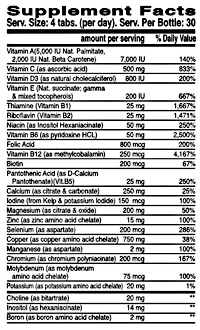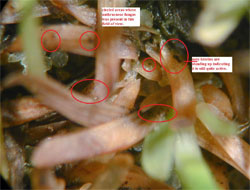|
What's Eating You?
Doug Ayres, Corral de Tierra Country Club, Salinas, CA:
 "...that is what I asked the greens the other day. What's eating you? They said, "Anthracnose. Make it stop". "...that is what I asked the greens the other day. What's eating you? They said, "Anthracnose. Make it stop".
Usually, when the turf here at Corral contracts a disease it is not severe and doesn't take long for the turf to recover. The Poa annua suffers and the bent grass is given the chance to continue its takeover of the putting surfaces. The reason for this phenomenon is the way we fertilize the turf. As has been mentioned in other posts on this blog as well as posts written by fellow believers in this method, we are trying to harden the turf plant off so that it is strong, slow growing and less susceptible to disease all while promoting bent grass and deterring Poa annua.
 Ingredients found in a typical multi-vitamin are used to feed the plant on a weekly basis. In fact micro nutrients given in heavy doses can help manipulate the playing surface extremely well.
Vitamin B, citric acid, iron, calcium, iodine from kelp, potassium, magnesium, manganesse, copper, zinc, and boron are all put into a mix that is sprayed on the grass. Good for you, good for the grass.
One ingredient that really helps kick out one of the legs on the 3-legged stool of disease is iron. Ferrous Sulfate dries out the surface and doesn't allow the disease to find a comfortable place to live and spread. Zinc and manganese act like those lozenges that help you recover from a cold or sore throat.
With all that being said... sometimes all the random conditions that are perfect for a disease outbreak fall into place and the grass succumbs to the pressure. That is what happened in June to our poa / bent greens.

Anthracnose got so bad it dropped into the roots and affected the plants to the core making it even more difficult to stop the spread.
This year we were unable to go the entire 365 day stretch without appling a fungicide to the greens as we have in previous years. We did however stop the spread of the disease and witness complete turf recovery in a relatively short time period. The things we normally do and the fertilizers that we normally use will continue to be utilized. I believe the method of keeping the surface dry, smooth and short have helped protect the grass from disease. When necessary, fungicides will be used for the health of the plant just like a shot of penicillin.
Good news is that the bentgrass was not affected and was allowed to overtake the sick Poa annua and fill in the diseased areas."
Visit Doug's blog at corralmaintenance.blogspot.com.
|